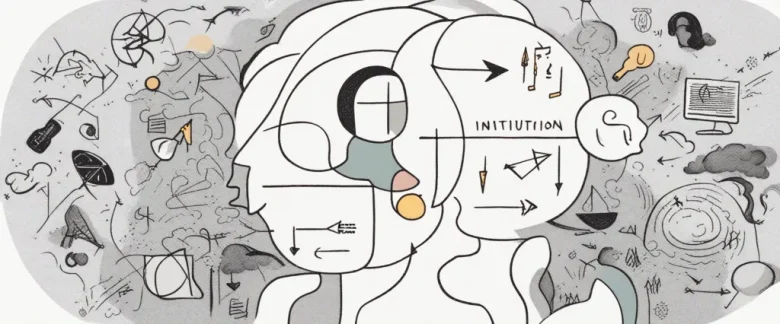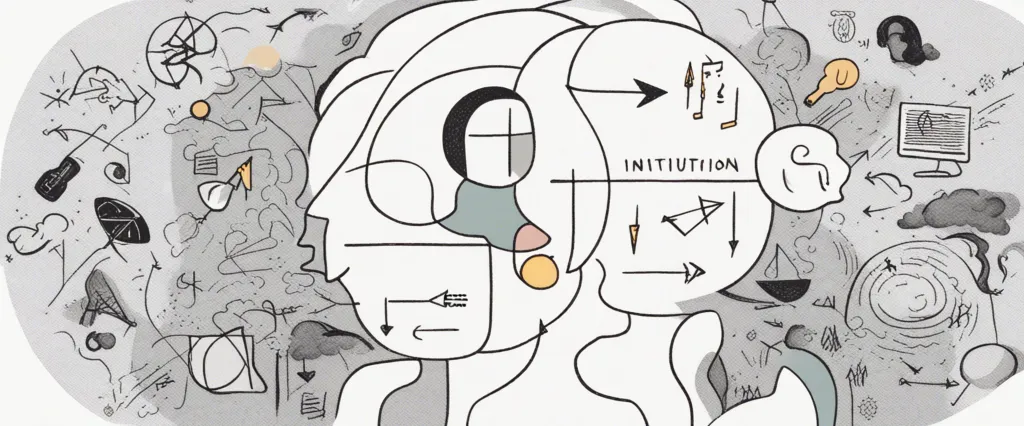In “The Element,” renowned educator Sir Ken Robinson presents a compelling argument about the importance of discovering and nurturing our unique talents and passions. With captivating anecdotes and insightful observations, Robinson challenges the traditional notions of intelligence and success, advocating for a shift towards a more holistic and personalized approach to education and self-discovery. As a distinguished authority in the field of education and creativity, Sir Ken Robinson has become one of the most influential voices in reimagining the way we view human potential and achievement. Through his TED Talks and bestselling books, he continues to inspire individuals around the globe to find their true calling and unlock their limitless potential.
Chapter 1: The Element
Chapter 1: The Element (The Element by Ken Robinson) begins with the author, Ken Robinson, introducing the concept of the “Element” and its significance in people’s lives. The Element refers to an individual’s unique passion or talent that aligns with their natural abilities and brings them deep satisfaction and fulfillment.
Robinson explains that many people spend their lives feeling disconnected from their true passions and talents, leading to a sense of unhappiness and unfulfillment. He emphasizes that the education system plays a crucial role in shaping individuals’ lives and their ability to discover their Element. However, he criticizes the education system for its focus on conformity and academic achievement, which often disregards students’ individual talents and passions.
Robinson shares several stories of individuals who discovered their Element and were able to excel in various fields. One of these stories is about a young ballerina named Gillian, who struggled academically but found her Element in dancing. Thanks to a teacher who recognized her talent and nurtured it, Gillian became a successful professional dancer.
Robinson argues that finding one’s Element should be a priority in education and society as it leads to personal fulfillment, happiness, and greater contributions to society. He suggests that cultivating creativity and individuality should be fundamental in the educational system, encouraging students to explore their passions and talents.
In conclusion, Chapter 1 of The Element sets the foundation for the book by introducing the concept of the Element and highlighting its importance in people’s lives. It challenges traditional education systems and advocates for a more individual-centered approach to help individuals discover and cultivate their passions and talents.
Chapter 2: Think Differently
Chapter 2: “Think Differently” of the book “The Element” by Ken Robinson explores the notion of creativity and the importance of cultivating a mindset that allows individuals to think differently about themselves and the world around them.
Robinson begins by highlighting the distinction between creativity and conformity, arguing that schools and societies often prioritize the latter over the former. He suggests that creativity is not limited to artistic pursuits but is a fundamental human characteristic that should be nurtured in all aspects of life. Robinson argues that our education systems tend to discourage creative thinking by focusing heavily on standardized tests and rigid curriculums, which undermine students’ natural curiosity and imagination.
The author emphasizes the role of imagination in fostering creativity and how it is linked to innovation and problem-solving. He outlines various examples of people who found their element – the place where their passions, talents, and interests intersect – by thinking differently. Robinson emphasizes that thinking differently involves seeing the world from different angles, challenging assumptions, and being open to new possibilities.
Furthermore, Robinson explores the concept of divergent thinking, which involves generating multiple, varied ideas and possibilities, as opposed to convergent thinking, which seeks a single correct solution. He discusses how schools often prioritize convergent thinking and suggests that a balanced approach that encourages both forms of thinking is crucial.
The chapter concludes with the idea that thinking differently requires creating an environment that supports creativity and gives individuals permission to explore their passions and take risks. Robinson argues that society should reevaluate its value systems and give more importance to creativity and innovation, as these qualities are essential for personal fulfillment and societal progress.
Overall, Chapter 2 of “The Element” emphasizes the need for a mindset shift that promotes creative thinking and encourages individuals to think differently about themselves and their potential.
Chapter 3: The Power of Imagination
Chapter 3: The Power of Imagination, from the book The Element by Ken Robinson, delves into the profound impact of imagination on our lives and the educational system.
Robinson introduces the concept of “divergent thinking,” which involves being able to think creatively and explore many possible solutions to a problem. He argues that our educational system often suppresses this type of thinking as it predominantly focuses on convergent thinking, where there is one correct answer. This suppression of imagination stifles students’ potential and limits their ability to explore their passions.
Robinson emphasizes that imagination is not limited to the arts, but it is an essential component in every field. He provides numerous examples of individuals who achieved great success by harnessing their imaginative powers, such as Elvis Costello in music and Paul McCartney in songwriting. Their willingness to think differently and experiment with creative ideas enabled them to excel in their respective fields.
The author also discusses the impact of modern technologies and the internet on imagination. While digital tools provide unprecedented opportunities for creativity, they can also be disengaging if not used in a way that fosters imagination. Robinson suggests that educators need to find ways to integrate these technologies into the classroom while encouraging imaginative thinking.
Furthermore, Robinson emphasizes the need for educators and parents to cultivate imagination in children. He suggests that creativity should be given equal importance as other academic subjects and should be supported through diverse learning experiences and environments that encourage experimentation and exploration.
In summary, this chapter highlights the importance of imagination, divergent thinking, and creativity in education and beyond. It underscores the need for a shift in the educational system to foster imaginative thinking, not only for personal fulfillment but also for the betterment of society as a whole.
Chapter 4: Do Schools Kill Creativity?

Chapter 4 of the book “The Element” by Ken Robinson explores the detrimental effects of the traditional education system on creativity. Titled “Do Schools Kill Creativity?”, the chapter highlights how schools inadvertently hinder students’ natural creative abilities and suppress their passions.
Robinson argues that schools place excessive emphasis on academic subjects such as mathematics and language, relegating creative subjects like art and music to secondary positions. This creates a hierarchy where academic prowess is valued more than creative thinking. This leads to a belief that some individuals are inherently more intelligent than others, based solely on their performance in traditional subjects.
Additionally, Robinson believes that the rigid structure of the education system inhibits students’ ability to think imaginatively and find their true passions. Throughout their schooling, children are often discouraged from taking risks or thinking outside the box. This fear of failure prevents them from exploring their creativity and discovering what truly engages them.
Robinson emphasizes the importance of nurturing creativity in education, as it is a vital skill in an ever-changing world. Creativity promotes problem-solving, innovation, and adaptability, all of which are increasingly crucial in today’s society. He advocates for a revolution in the education system that values and encourages creative pursuits alongside academic achievements.
In conclusion, Chapter 4 of “The Element” highlights how educational institutions stifle creativity and limit students’ potential by focusing predominantly on traditional academic subjects. Robinson calls for a shift in approach, urging educators to recognize and foster the creative abilities of all students, enabling them to discover their true passions and reach their full potential.
Chapter 5: Out of Our Minds
Chapter 5 of “The Element” by Ken Robinson is titled “Out of Our Minds: Creative Education for the 21st Century.” In this chapter, Robinson explores the importance of creativity in education and how it can be fostered to equip students for the challenges of the modern world.
Robinson begins by discussing the concept of “divergent thinking,” which refers to the ability to generate multiple ideas and explore various possibilities. He argues that traditional education systems often focus heavily on convergent thinking, which involves finding a single correct answer, thereby stifling creativity. Robinson believes this approach is no longer sufficient in a world that demands innovation and problem-solving skills.
According to Robinson, creativity is not limited to the arts; it extends to all areas of life. He provides an example of a groundbreaking scientific discovery made through a creative leap and emphasizes the importance of nurturing diverse talents. Robinson suggests that schools should embrace a more personalized approach to education that allows individuals to discover their unique passions and strengths.
The chapter also addresses the influence of standardized testing on education. Robinson argues that this system narrows the curriculum, reduces creativity, and fosters a fear of failure among students. He advocates for a shift towards a more holistic assessment that focuses on individual growth and development.
Robinson concludes the chapter by highlighting the significance of collaborative learning and the need for schools to equip students with the skills to work together effectively in teams. He emphasizes the importance of creativity, not only in preparing students for future careers but also in enabling them to live fulfilling lives and contribute positively to society.
Overall, Chapter 5 of “The Element” emphasizes the need for a transformation in education systems to foster creativity and provide students with the skills necessary to thrive in the modern world.
Chapter 6: Beyond Imagining
Chapter 6: Beyond Imagining of the book The Element by Ken Robinson explores the concept of imagination and its role in finding one’s passion and purpose in life. The chapter emphasizes the power of imagination and how it can help individuals think beyond limitations and conventional boundaries.
Robinson begins by discussing how our education system often discourages imagination from a young age. He argues that imagination is a fundamental aspect of human intelligence and creativity, yet it tends to be underdeveloped in traditional schooling. He asserts that the imagination is not separate from reality; instead, it enables us to see and create possibilities that others may not.
The author then delves into the idea of “sympathetic thinking,” which involves exploring and understanding the perspectives and experiences of others. By empathizing with others and imagining their circumstances, we are able to foster compassion and develop a more inclusive society.
Robinson further highlights the significance of imagination in the workplace, emphasizing the need for innovation and creativity in today’s rapidly evolving world. He argues that organizations should actively encourage and nurture imagination to drive breakthroughs and find new solutions to complex problems.
Throughout the chapter, Robinson shares inspiring stories of individuals who have tapped into their imagination to make a difference in various fields. From inventors and entrepreneurs to artists and educators, these individuals demonstrate how imagination can lead to groundbreaking achievements and personal fulfillment.
In summary, Chapter 6 of The Element explores the power of imagination in unlocking one’s potential and finding purpose in life. It emphasizes the need for imagination in education, empathy, and the workplace, showcasing examples of individuals who have harnessed their imaginative abilities to make a significant impact.
Chapter 7: Finding Your Tribe
Chapter 7 of “The Element” by Ken Robinson, titled “Finding Your Tribe,” explores the significance of finding a community that supports and nurtures our passions and talents. Robinson argues that connecting with like-minded individuals or a community that resonates with our interests is essential for personal growth and success.
The chapter begins by emphasizing the influence of our environment on our development. Robinson asserts that being surrounded by people who understand and appreciate our unique abilities can profoundly impact our motivation, creativity, and self-esteem. Drawing on numerous examples, he highlights the transformative power of finding our tribe, a group of individuals who share our passions and encourage our pursuits.
Robinson examines the role of schools and institutions in fostering a sense of community among students and emphasizes the importance of creating spaces that cultivate collaboration and exchange of ideas. He discusses how a supportive educational environment not only enhances academic performance but also encourages exploration and expression of individual interests.
Moreover, the chapter delves into the concept of online communities and the opportunities they offer for individuals to connect with like-minded people around the world. Robinson argues that the digital realm allows us to find our tribe, regardless of geographical boundaries, and provides a platform for collaboration, sharing, and learning from one another.
Ultimately, Robinson advocates for actively seeking and nurturing connections with individuals who understand and appreciate our passions and talents. By finding our tribe, we create a support system that encourages us to explore our natural abilities, continuously learn, and thrive both personally and professionally.

Chapter 8: Making the Grade
Chapter 8 of “The Element” by Ken Robinson, titled “Making the Grade,” delves into the topic of education and its focus on grades and standardized testing. Robinson emphasizes the negative effects of this system on students’ creativity and passion for learning.
Robinson argues that the current education system places too much importance on grades, which rewards conformity rather than originality. Standardized tests, he asserts, are flawed in measuring a student’s true abilities and potential. He cites studies that show how many highly successful individuals, such as Walt Disney and Richard Branson, performed poorly in school but went on to excel in their respective fields.
The chapter highlights the impact of labeling students based solely on their grades. Robinson recounts stories of individuals who were deemed average or below average students but found their true passions outside of the traditional academic setting. He asserts that this labeling often leads to low self-esteem, discouragement, and a sense of inadequacy among young learners.
Moreover, Robinson examines the mismatch between the education system and the demands of the modern workforce. Many schools prioritize academic subjects while neglecting creative subjects like art and music, which, in turn, hinders students’ exploration of their innate talents and interests. He believes that the education system should value diversity and allow students to develop their unique abilities rather than merely conforming to a set of standards.
In conclusion, Chapter 8 emphasizes the detrimental effects of the current education system that relies heavily on grades and standardized testing. Robinson advocates for a shift towards a more holistic approach to education, valuing creativity, individuality, and nurturing diverse talents. By doing so, he believes that students will be more engaged, motivated, and ultimately find their ‘element’ – the intersection of their passion and natural talent.
After Reading
In conclusion, “The Element” by Ken Robinson explores the concept of finding one’s passion and purpose in life. Robinson emphasizes the importance of discovering and nurturing our natural talents, as this leads to a state of fulfillment and success. He argues that our current education system often stifles creativity and discourages individuality, urging for a shift towards a more personalized and inclusive approach. Through a variety of real-life examples, Robinson inspires readers to embrace their unique abilities, explore new avenues, and create a life that truly reflects their passions. Overall, “The Element” serves as a thought-provoking guide, encouraging individuals to unlock their full potential and find their own element.
1. Flow: The Psychology of Optimal Experience” by Mihaly Csikszentmihalyi – In this book, Csikszentmihalyi explores the concept of “flow,” which is that state of being completely absorbed and fully engaged in an activity. Similar to “The Element,” this book encourages readers to find their passions and purpose in order to lead a more fulfilling life.
2. Drive: The Surprising Truth About What Motivates Us” by Daniel H. Pink – Pink delves into the science of motivation and argues that intrinsic motivation, fueled by our desire for autonomy, mastery, and purpose, is key to finding our element. Like Ken Robinson, Pink emphasizes the importance of aligning our work with our values and passions.
3. “Big Magic: Creative Living Beyond Fear” by Elizabeth Gilbert – Gilbert, the author of “Eat, Pray, Love,” explores the notion of creative living and encourages readers to embrace their curiosity and pursue their creative passions without allowing fear to hold them back. This book inspires individuals to find their element and tap into their innate creative abilities.
4. Grit: The Power of Passion and Perseverance” by Angela Duckworth – Duckworth examines the characteristics of highly successful individuals and argues that talent alone is not enough for success; it’s the combination of passion and perseverance that truly makes a difference. Building on the ideas in “The Element,” this book showcases the importance of finding and pursuing one’s passions with tenacity.
5. The Art of Possibility: Transforming Professional and Personal Life” by Rosamund Stone Zander and Benjamin Zander – This book explores the power of reframing our perspectives and embracing new possibilities. The authors, a conductor and a therapist, share inspiring stories and practical advice that encourage readers to seek their element by challenging limiting beliefs and embracing a growth mindset.




